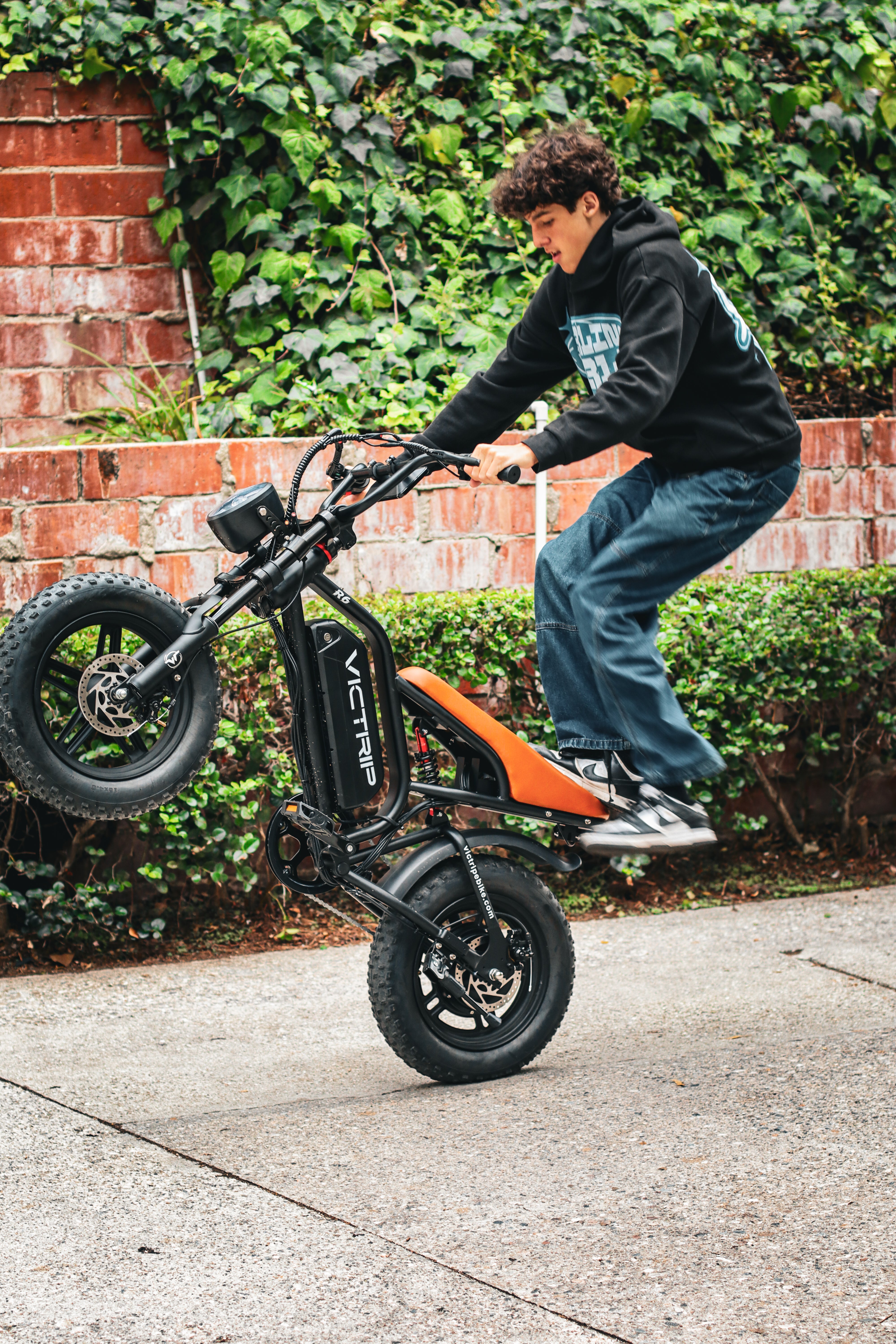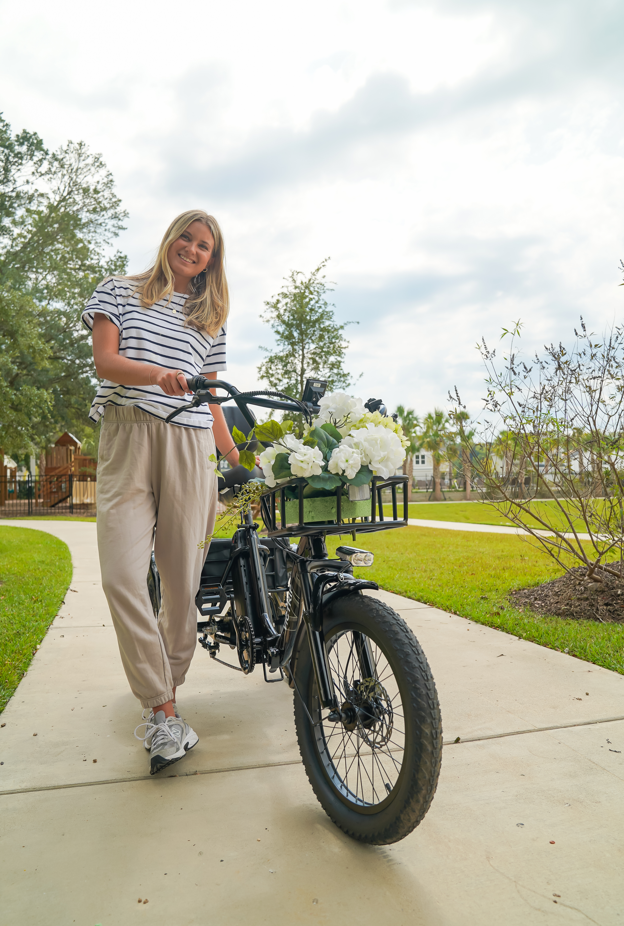Attaching a trailer to an ebike isn't just "clip and go." How to Safely Attach an Ebike Trailer to Your Electric Bike affects rider safety, vehicle handling, the trailer’s longevity, and legal compliance. Done right, a trailer expands your ebike’s utility for groceries, commuting, kids, or pets. Done wrong, it creates instability, increases stopping distance, and risks accidental decoupling. This guide covers the full workflow: selection, attachment, testing, riding technique, and maintenance — from an expert, experience-driven perspective.
Key Components of an Ebike Trailer and Hitch System
Understanding parts is half the battle. Below are the components you’ll meet when learning how to safely attach an ebike trailer to your electric bike.

Trailer Frame, Axle, and Coupler
The frame supports cargo; the axle and wheels carry the load; the coupler (or “tongue”) is the active part that mates to the bike’s hitch. Inspect welds, tubes, and the coupler’s condition before every attachment.
Hitch Types: Rear Hub, Seatpost, Rear-rack, and Quick-release
Hitches vary. Common options:
-
Rear hub hitch: attaches to axle or dropout — very secure but may require specific axle adaptors.
-
Seatpost hitch: clamps to seatpost — quick but not ideal for heavy loads or very flexible seatposts.
-
Rear-rack hitch: mounts to a sturdy rack — good balance for cargo trailers.
-
Quick-release coupler: convenient but ensure proper locking mechanism.
Choose a hitch recommended by the trailer maker or a reputable third party, and confirm compatibility with your ebike’s dropouts, axle type (thru-axle vs quick release), and frame material.
Safety Chains, Pins, and Secondary Locks
A safety chain or tether is an inexpensive life saver—if the coupler fails, the chain keeps the trailer from rolling free. Use cotter pins and locking clips where required.
Choosing the Right Trailer for Your Ebike
Your trailer choice must match your ebike’s power, frame, and intended use.
Weight Capacity and Load Distribution
Every trailer has a maximum payload. Know your ebike's assisted-weight limits too. Place heavy items low and centered over the axle to minimize sway.
Wheel Count: Single vs Two-Wheel Trailers
-
Single-wheel trailers: more nimble and follow the bike closely; better for uneven terrain.
-
Two-wheel trailers: inherently stable and carry heavier loads; wider turning radius.
Trailer Design: Cargo, Child, Pet, and Utility
Child trailers have restraints and enclosure; cargo trailers are open; pet trailers add ventilation. Choose a trailer certified for the payload and purpose.
Tools and Accessories You’ll Need
A small investment in tools raises safety dramatically.
Basic Toolkit and Torque Tools
-
Allen keys and wrenches (metric)
-
Torque wrench (recommended for axle/hitch bolts)
-
Screwdriver set
-
Chain or cable cutters (if installing a custom tether)
Reflective Tape, Lights, and Flags
Enhance visibility with rear lights, side reflectors, and a high-visibility safety flag. Many jurisdictions require lighting at dusk or night.
Step-by-Step Attachment Procedure
This section answers the core question: How to Safely Attach an Ebike Trailer to Your Electric Bike, with precise steps you can follow.
1. Pre-attachment Inspection
-
Confirm trailer and hitch are undamaged.
-
Check that your ebike battery is secure and that the rear axle or seatpost area is clean.
-
Verify tire pressure on both bike and trailer.
2. Mounting the Hitch on Your Ebike
-
Fit the hitch to the type of mount designed for your bike (axle/seatpost/rack).
-
Tighten hardware to the manufacturer’s torque spec. If the hitch uses quick-release adaptors, confirm the skewer is correctly oriented and the cam has proper tension.
3. Coupling the Trailer — Align, Insert, Lock
-
Bring trailer tongue to hitch. Align visually.
-
Push the coupler fully into the hitch until you hear/feel the lock engage.
-
Insert any safety pin or locking clip included.
4. Securing Safety Chains and Secondary Locks
-
Attach the safety chain or tether to a sturdy point on the bike frame (not thin brake cables).
-
Avoid wrapping the chain where it can rub moving parts.
5. Final Torque, Tightness, and Quick Test
-
Re-check torque on hitch bolts and axle nuts.
-
Walk the bike forward 5–10 meters with the trailer attached to detect any play, noise, or dragging.
-
Perform a low-speed straight-line test in a safe area before carrying cargo.
Pre-ride Safety Check (The 10-Point Checklist)
Do this every time. It takes a minute and prevents calamities.
-
Hitch fully engaged and pin in place.
-
Safety chain/tether attached and free of tangles.
-
Quick-release levers closed and cam tensioned.
-
Trailer wheels spin freely; no rubbing.
-
Tire pressures at recommended PSI.
-
Lights and reflectors operational and visible.
-
Load evenly distributed and secured.
-
Brakes responsive with expected stopping distance.
-
No loose clothing or items that can catch the hitch.
-
Short test ride at low speed to confirm handling.
Loading Best Practices — Packing, Balance, and Limits
-
Put heavy items over or slightly ahead of the trailer axle.
-
Keep the center of gravity low.
-
Use straps to prevent shifting; foam or non-slip liners help keep items from moving.
-
Respect the trailer’s payload limit and the ebike manufacturer’s recommended total weight limit (bike + rider + cargo).

Riding Techniques with a Trailer Attached
How you ride changes with a trailer. Respect the differences.
Starting, Stopping, Braking, and Cornering
-
Starting: Use a gentle throttle or pedal assist. Avoid sudden surges.
-
Stopping: Expect longer braking distances — allow twice the normal stopping room when loaded.
-
Braking strategy: Modulate front and rear brakes; let regenerative braking (if present) assist but don’t rely on it alone.
-
Cornering: Take wider lines and slow before the corner. Avoid sharp counter-steering.
Speed Management and Hill Strategy
-
Keep speeds moderate — high speed magnifies sway and increases stopping distance.
-
On hills, shift early and maintain cadence; descending heavy loads require more braking control.
Maintenance and Storage of Trailer and Hitch
Routine care preserves safety and lifespan.
Periodic Checks and Lubrication
-
Inspect welds, frame integrity, bolts, and hitch connections monthly.
-
Grease moving hitch parts lightly to prevent corrosion. Avoid overgreasing—keep grease away from brake surfaces.
Winter and Long-term Storage Tips
-
Store the trailer off the ground or indoors to prevent rust.
-
Remove batteries (if any) and keep them stored per manufacturer specs.
-
Cover the trailer to keep dust out and protect fabric or plastic components.
Troubleshooting Common Problems
Sway
-
Causes: poor load distribution, excessive speed, or loose hitch.
-
Fix: redistribute weight, tighten hitch, slow down.
Noise or Rubbing
-
Causes: misaligned coupler, loose axle nuts, or bent frame.
-
Fix: realign, retorque, replace damaged parts.
Hitch Play
-
Causes: worn coupler or missing pin.
-
Fix: replace worn parts immediately; never ride with excessive play.
Regulations, Insurance, and Safety Standards
Laws vary by jurisdiction. Check local rules for trailer use, especially for child-carrying trailers (which may require harnesses and age/weight limits). For peace of mind, consider liability coverage that includes trailer cargo and passenger scenarios. The League of American Bicyclists and local cycling coalitions often publish regional guidance on trailer use: https://bikeleague.org.
Conclusion — Ride Confidently and Responsibly
How to Safely Attach an Ebike Trailer to Your Electric Bike is not a single trick but a habit: choose the right trailer, attach it properly, run the pre-ride checks, load thoughtfully, ride conservatively, and maintain your equipment. Those habits add up to safer, more reliable trips — whether you’re hauling groceries, commuting, or bringing a child along for the ride. With preparation and respect for limits, trailers expand what an ebike can do without compromising safety.
FAQs
Can I attach any trailer to any electric bike?
Not always. Physical compatibility (dropout type, axle size, seatpost diameter) and weight capacity of your ebike and frame matter. Use manufacturer recommendations and properly rated adaptors.
How much weight can an ebike trailer safely carry?
Each trailer has its payload rating—commonly 20–100 kg depending on design. Also factor in the ebike’s allowed total weight. Exceeding either limit risks handling issues and possible frame/hub damage.
Are there legal restrictions for ebike trailers?
Some regions restrict child trailers, require lights, or ban trailers on certain bike paths. Check city/state regulations before regular use.
Can I attach a trailer with a child seat?
Only use trailers specifically designed and certified for children, with harnesses and roll protection. Follow age, height, and weight guidance provided by the trailer maker.
How do I prevent trailer sway?
Keep the load low and centered, use a properly fitted hitch, avoid abrupt steering or braking, and reduce speed. Anti-sway bars or stabilizers are available for some models.
Do trailers affect ebike battery life?
Yes — more weight increases power demand and reduces range. Plan for reduced range when hauling heavy loads.




Share:
How to Choose Between Fat Tyre vs Standard Tyre eBikes
VICTRIP R6 Off Road Ebike Lowest Price — Only $699 Black Friday!